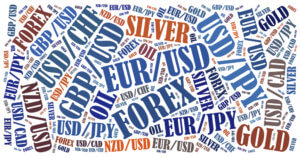Quick Overview:
- Historical Stability and Spikes: Pre-2008, prices were stable; post-2008 saw significant rises due to demand and renewable energy influences.
- Current Price Levels (April 2024): Corn at $4.30/bushel, wheat at $5.80, soybeans at $11.40, indicating a modest fall but above historical levels.
- Economic Implications: Rising commodity prices could sustain high-interest rates, impacting inflation and global economic stability.
Commodity prices have always been a hot topic, especially when they directly impact what you pay for groceries or fuel. However, the intricacies behind these prices often remain under the radar for many consumers. As we explore the ever-changing landscape of commodity markets, the words of Indermit Gill, World Bank’s Chief Economist, loom large:
“A key force for disinflation — falling commodity prices — has essentially hit a wall. That means interest rates could remain higher than currently expected this year and next.”
So, what’s happening in the world of commodity prices? Let’s dive in.
Corn, Wheat, Soybeans Price Trends: 1984-2022 Overview
Let’s take a step back in time to understand the current dynamics. Historically, commodity markets have seen distinct regimes with their pricing characteristics.
1984-2007
Corn: $1.50-$5 per bushel
Wheat: $2.50-$5 per bushel
Soybeans: $4.50-$10 per bushel
During this period, prices remained relatively stable, staying within predictable ranges.
2008-2022
Corn: $3-$8 per bushel
Wheat: $4.50-$10 per bushel
Soybeans: $8.50-$17 per bushel
From 2008 onwards, the markets entered a new regime, largely characterised by rising prices. Corn, wheat, soybeans, and even metals and energy saw significant increases due to various factors, including a renewable energy boom, rising demand, and China’s increasing influence.
Commodity Prices in April 2024: Corn, Wheat, Oil, and More
As of April 2024, here’s where we stand:
Corn: $4.30 per bushel
Wheat: $5.80 per bushel
Soybeans: $11.40 per bushel
U.S. Crude Oil: $70 per barrel
Copper: $3.50 per pound
While prices have fallen from their highs in 2022, they remain above historical levels. The recent dip relieved consumers, but Gill’s cautionary statement about falling commodity prices hitting a wall hints at potential turbulence.
Commodity Market Shifts: New Regime (2008) and Price Drops (2022)
In 2008, the commodity markets transitioned to a new regime, with corn, wheat, soybeans, energy, metals, and soft commodities all seeing significant price increases. This shift was attributed to the renewable energy boom, demand-driven rallies, and the rising influence of China.
Commodity Price Drop Since 2022
Commodity prices have declined in recent years, offering some reprieve to consumers globally. However, this trend has slowed, and concerns remain about a potential price spike due to unforeseen shocks.
Mixed Commodity Market Reactions: Producers vs. Consumers
Commodity prices often evoke mixed reactions depending on one’s economic perspective.
Farmers and Commodity Producers
Farmers and producers wish prices to rise and break through the “wall.” Higher prices mean better profits and stronger financial security for their operations.
Grocery Shoppers and Fuel Consumers
Meanwhile, grocery shoppers and fuel consumers hope for prices to continue falling. For them, higher commodity price











